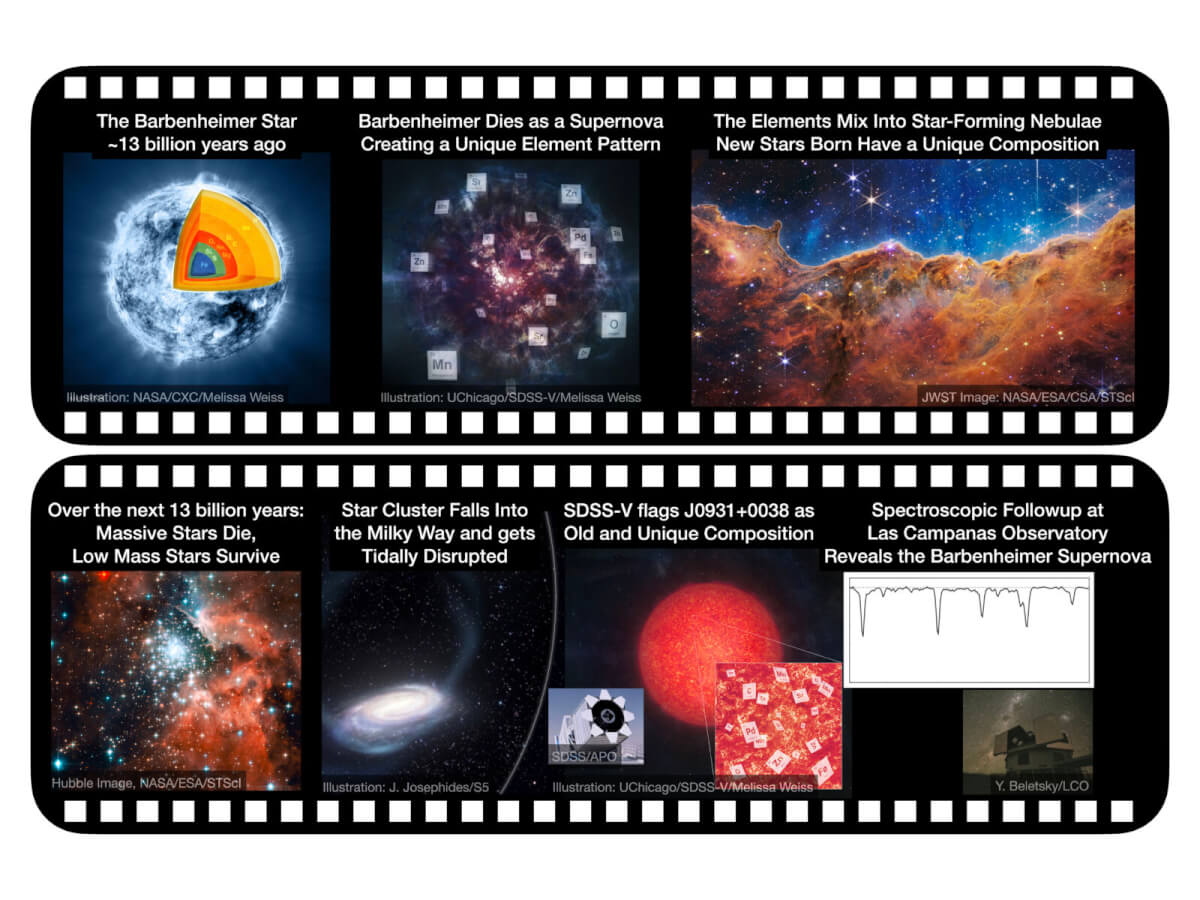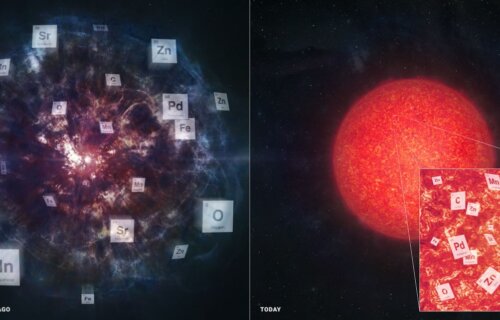CHICAGO — Astronomers have identified a remarkable celestial phenomenon. According to the team, it’s so spectacular they decided to name it after the blockbuster combo of 2023 — the “Barbenheimer Star.”
The Sloan Digital Sky Survey (SDSS) team discovered this ancient, enormous star that exploded in a manner scientists thought was impossible. This explosion resulted in a unique pattern of elemental remnants, leaving a trail of evidence that persists billions of years later.
The star, scientifically known as J0931+0038, is believed to have been 50 to 80 times the mass of our Sun. It likely originated from the supernova remnants of a preceding star.
SDSS researchers say the ancient supernova was so massive that its occurrence baffles astronomers. Prevailing theories suggest such large stars would directly collapse into black holes, without a preceding supernova. Thus, the unusual composition of this star implies that its predecessor was also extraordinarily unusual.
“We’ve never seen anything like this. Whatever happened back then, it must have been amazing. We named it The ‘Barbenheimer Star’ for its spectacular nucleosynthesis,” says the study’s lead author, Alex Ji of the University of Chicago and SDSS, in a media release.
This whimsical name references the contrasting themes of the “Barbie” and “Oppenheimer” films, both of which gained significant attention at the movie theaters in 2023.

Nucleosynthesis, the process of creating new atomic nuclei, initially occurred shortly after the Big Bang.
“The Universe directed this movie, we are just the camera crew,” says Keith Hawkins of the University of Texas at Austin and the Scientific Spokesperson for the SDSS. “We don’t yet know how the story will end.”
The Barbenheimer Star wasn’t observed directly. Instead, the team traced its history using “stellar archaeology.” Similar to how archaeologists piece together history from present-day findings, astronomers use current stellar evidence to reconstruct the ancient universe’s conditions.
The journey began with J0931+0038, a seemingly ordinary, distant, bright red star first captured in an SDSS image in 1999. Two decades later, the SDSS telescope revisited this star with enhanced capabilities.
The SDSS Milky Way Mapper program analyzed the star’s spectrum, revealing its temperature and chemical makeup. The star’s SDSS spectrum, indicating a significantly low magnesium level, warranted further investigation with the Magellan telescopes in Chile.
Upon examining the follow-up spectrum, Ji immediately recognized its significance, prompting urgent team discussions. J0931+0038 displayed unique characteristics: scarce odd-numbered elements like sodium and aluminum, an abundance of elements near iron on the periodic table like nickel and zinc, and an excess of heavier elements such as strontium and palladium.
“No current model of element formation can account for these findings. The elemental pattern appears almost paradoxical, defying simple adjustments or explanations,” adds co-lead of the study, Sanjana Curtis of the UC Berkeley.
The study is scheduled for publication in Astrophysical Journal Letters.
South West News Service writer Dean Murray contributed to this report.
